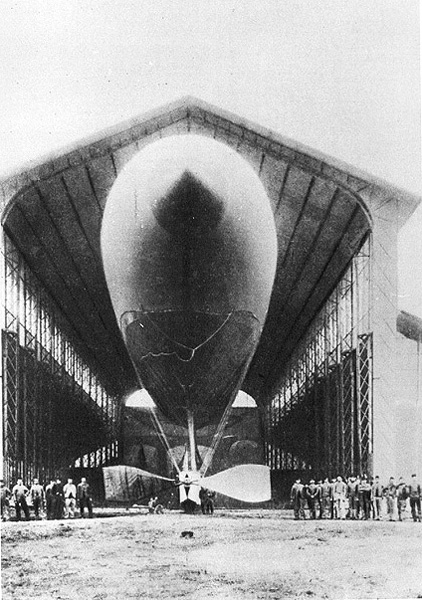Try as I might, I can find very few inventors, enthusiasts, engineers who were experimenting with light-than-air flight in America. Solomon Andrews seems to be the only name I can find. Did American have enough interest to develop airships in this nation, or were we more focused of the heavier-than-air aspect of the problem. I ask, because it seem to me that the epicenter of airship development was in Europe, where heavier-than-air development took a back seat (probably because that HTA powered, even gliding flight was more difficult and was not perceived as a practical expedient to commercial success. I can go deeper into those thoughts at another time. I know that there were American entrepreneurs who considered airship lines to complete with the railroad, but I can find relatively little information of these mysterious American airship enthusiasts (and if any one is even thinking about mentioning Charles Dellschau to me, please don't). Let me hear from you all and we can start a discussion on this topic, if it is one and not a wild goose chase.
You are using an out of date browser. It may not display this or other websites correctly.
You should upgrade or use an alternative browser.
You should upgrade or use an alternative browser.
American Airship Development, or lack thereof, in American during the late 1800s
- Thread starter papacavy
- Start date
Flying Sorcerer
ACCESS: Confidential
- Joined
- 18 June 2008
- Messages
- 120
- Reaction score
- 64
I assume it's because by the time LTA travel became feasible American rail and riverine transportation was already highly developed and far more reliable over any distance. Weren't European airship developments largely government funded? I don't know if there was any pressure from the US army or navy for an airship service before 1900.
Excellent point. I never considered that and I do not think it is covered in any other books on the subject. I will endeavor to include that either on my Pioneers of the Skies Facebook page, my up-coming blog and (hopefully) a new book on the development of aviation from ancient times to the beginning of the first world war. Thank you for the insite.
- Joined
- 31 July 2013
- Messages
- 546
- Reaction score
- 1,074
I came across this site in regards to late 19th Century airship development in the US if it is of interest. https://www.micahhanks.com/ufos/airships-in-the-1800s-an-odd-history-of-aerial-phenomena/
- Joined
- 11 March 2012
- Messages
- 3,016
- Reaction score
- 2,698
Flying Sorcere,
Brings up a key point that dirigibles were only invented after the USA had invested millions of dollars in a fast and reliable rail network. Any new technology would need a significant advantage over rail before investors provide significant funds.
Perhaps airships only had the advantage where it was prohibitively expensive to lay rails: mountains, swamps or islands.
Rail dominated passenger travel in the USA until Boeing (247) and Douglas (DC-series) built the first reliable, all-metal airliners during the mid-1930s. Even then, early airlines offered fly-by-day and sleep-in-a-Pullman-Car by-night service from the Atlantic to the Pacific Coasts.
Brings up a key point that dirigibles were only invented after the USA had invested millions of dollars in a fast and reliable rail network. Any new technology would need a significant advantage over rail before investors provide significant funds.
Perhaps airships only had the advantage where it was prohibitively expensive to lay rails: mountains, swamps or islands.
Rail dominated passenger travel in the USA until Boeing (247) and Douglas (DC-series) built the first reliable, all-metal airliners during the mid-1930s. Even then, early airlines offered fly-by-day and sleep-in-a-Pullman-Car by-night service from the Atlantic to the Pacific Coasts.
All hell break lose...
View: https://www.youtube.com/watch?v=E7W9a9tNhvA
(man, that's sooooo ugly !)
(man, that's sooooo ugly !)
I've found a few references to an airship that was being built in Baltimore in the mid-1870s. Designed by Frederick F. Schroeder, a German inventor, it was supposed to have been capable of crossing the Atlantic, though unfortunately that did not transpire, due to it being wrecked part way through its construction.
"Schroeder's Balloon" - from "The Michigan Argus", October 8, 1875 (pdf, look for the article in column 6)
"Schroeder's Air-Ship" - from "The Charlotte Democrat", November 1, 1875
"Wreck of the Baltimore Air-ship" - from "Scientific American", February 5, 1876
"The Inventor of the Baltimore Air-ship ..." - from "The Highland Weekly News", May 18, 1876
I've yet to locate an illustration of Schroeder's design. Despite having read the written descriptions of it, I've difficulty in imagining what it was supposed to look like.
Cheers,
Paul
"Schroeder's Balloon" - from "The Michigan Argus", October 8, 1875 (pdf, look for the article in column 6)
"Schroeder's Air-Ship" - from "The Charlotte Democrat", November 1, 1875
"Wreck of the Baltimore Air-ship" - from "Scientific American", February 5, 1876
"The Inventor of the Baltimore Air-ship ..." - from "The Highland Weekly News", May 18, 1876
I've yet to locate an illustration of Schroeder's design. Despite having read the written descriptions of it, I've difficulty in imagining what it was supposed to look like.
Cheers,
Paul
Last edited:
I wonder how it could cross the Atlantic (no less) when state-of-the-art resulted in this, some years later.

 en.wikipedia.org
en.wikipedia.org

La France (airship) - Wikipedia
Similar threads
-
JP Aerospace, three airships (and electric propulsion) to orbit?
- Started by FutureSpaceTourist
- Replies: 30
-
Vladimir Fedorovich Savelyev's quadruplanes
- Started by Stargazer
- Replies: 3
-
-
-
